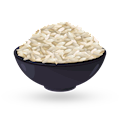Kimchi jjigae is a flavorful Korean stew that employs kimchi as its base ingredient. Other elements usually include diced tofu, pork, or seafood, along with scallions and other vegetables such as potatoes or zucchinis. Kimchi stew is one of the most common dishes enjoyed in South Korea, and it is traditionally served as a communal meal, and should always be piping hot.
The dish is best prepared with older kimchi since it tends to impart more flavor to the stew. Kimchi jjigae is usually served with rice on the side, as well as other traditional Koran sides (banchan).
MOST ICONIC Kimchi jjigae
View moreSundubu jjigae is a variety of traditional Korean stews. Besides numerous other ingredients, the foundation of sundubu is uncurdled tofu. Since the tofu is not strained, its consistency is not firm, but rather soft and silky. It can vary in texture from incredibly soft to more solid types, but it never reaches the consistency of completely strained tofu.
The choice of additional ingredients is extensive and primarily depends on personal preferences. It can be based on meat (usually beef) or a variety of seafood. Occasionally, both meat and seafood can be used in the dish at the same time. Onions, zucchini, scallions, mushrooms, and garlic are the most common vegetables found in sundubu.
MAIN INGREDIENTS
Gamjatang is a flavorful Korean stew made with pork spine and potatoes as the key ingredients, along with bean paste, chili powder, and garlic which are also simmered in the pot. The dish is usually topped with sesame leaves and served with a bowl of rice on the side.
Gamjatang has origins in the Incheon area, famously full of construction workers who used to cook it throughout the day so it could be consumed when they would finish working. The stew would often be paired with a few shots of cold soju. Today, gamjatang is a popular hangover cure in Korea, and it has spread to other territories such as Europe, USA, and Southeast Asia.
MOST ICONIC Gamjatang
View moreMAIN INGREDIENTS
This Korean stew usually combines kelp and anchovy stock with kimchi, baked beans, spam, and hot dog sausages, while the common addition also includes ramen noodles, pork, potato noodles, rice cakes, or tofu. Also known as army stew, budae jjigae was created as a true fusion dish sometime in the 1950s, in the aftermath of the Korean War.
Since the food was scarce, the locals would smuggle processed meat products that they could find at American army bases, and through ingenuity and resourcefulness, they created budae jjigae. The dish is believed to have originated at an army base located in Uijeongbudong.
The star ingredient in this traditional Korean stew is fermented soybean paste (doenjang). Although there are many variations, this hearty dish typically consists of a flavorful broth that is enriched with rice water, anchovies, kelp, and a generous amount of soybean paste.
The usual additions include different vegetables such as zucchini, onions, scallions, and radishes, as well as tofu, meat, or seafood. Doenjang jjigae is one of the most common stews in Korean cuisine, and it is usually served with rice on the side.
MAIN INGREDIENTS
Maeutang is a spicy Korean fish stew that is usually made with freshwater or saltwater fish such as red snapper, pollock, cod, monkfish, or sea bass. Traditionally, a whole fish is used in the dish, including the head and the bones. The fish is cut into pieces and is then simmered in an anchovy-based broth together with vegetables and occasionally tofu, while the whole dish is usually spiced with gochujang chili paste and chili pepper flakes.
In some restaurants, the guests are often allowed to choose the fish from the aquarium, which will eventually be used in their stew. Although the term maeuntang roughly translates merely as spicy stew, it is usually used to denote this fish-based variety.
This traditional South Korean hotpot is made with beef tripe, typically small intestines known as gopchang. The dish consists of a flavorful beef broth, gochujang paste, pre-cooked and sliced tripe, onions, scallions, garlic, ginger, carrots, mushrooms, or other vegetables.
Because of the time-consuming preparation, gopchang jeongol is mostly enjoyed in specialized restaurants. It is usually served as a communal dish, and it is typically accompanied by rice.
TasteAtlas food rankings are based on the ratings of the TasteAtlas audience, with a series of mechanisms that recognize real users and that ignore bot, nationalist or local patriotic ratings, and give additional value to the ratings of users that the system recognizes as knowledgeable. TasteAtlas Rankings should not be seen as the final global conclusion about food. Their purpose is to promote excellent local foods, instill pride in traditional dishes, and arouse curiosity about dishes you haven’t tried.









